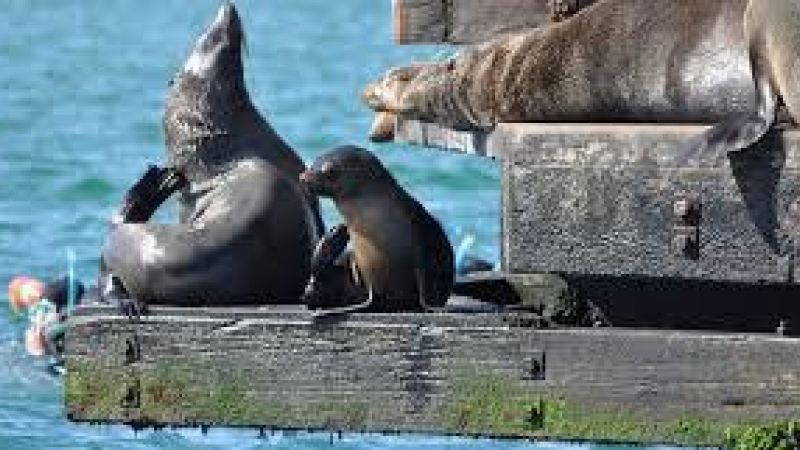
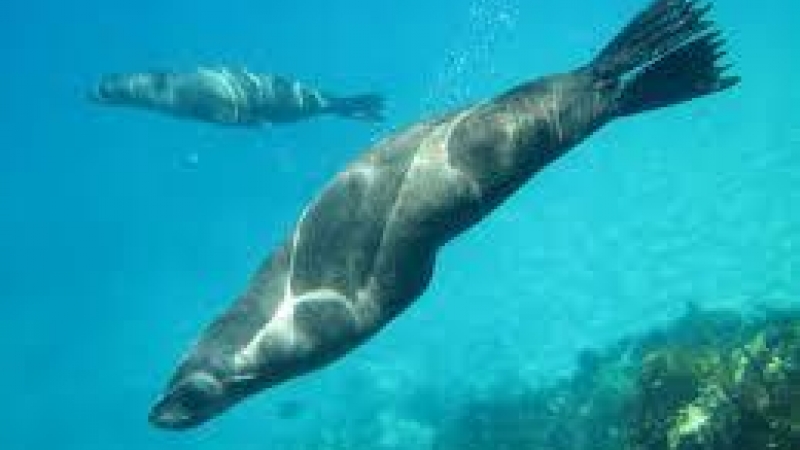

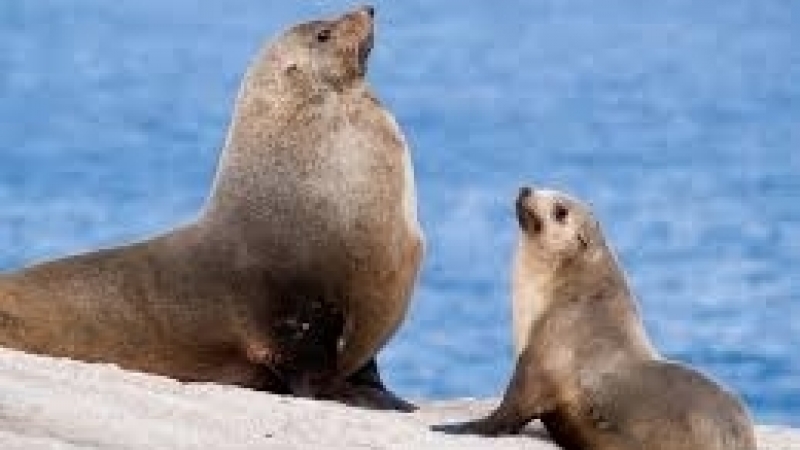
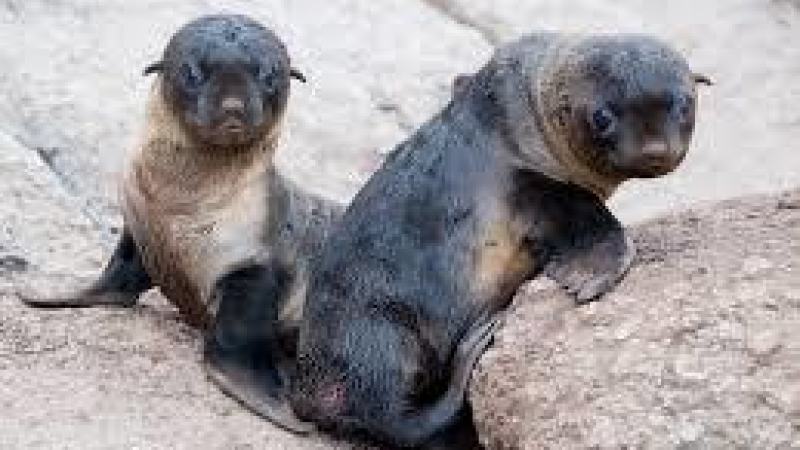
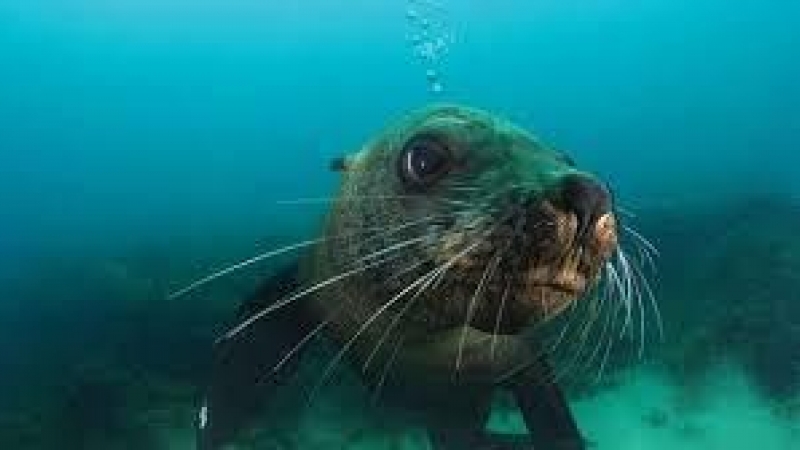

Seals of Port Phillip Bay
All seals are protected in Victorian waters and need to be treated with respect.
We remember when a young girl on the bow of the Plover caught her first fish. She was giggling with excitement as the rod bent over with its bounty. The net was called for as her catch looked to be a beauty. Bubbles were seen rising to the surface. Not a good sign but we didn’t have the heart to tell this young lady what was afoot below. She struggled for a few minutes to pull the fish to the surface but in a last minute flurry it came up and onto the decks. Half of it did anyway. The other half was being flaunted by a male Australian Fur Seal about 5 m from the boat. Not to be discouraged the young girl laughed it off. To her credit she continued to fish and caught several other keepers fully intact.
More often than not, a seal will approach a vessel at anchor on the bay. Although these mammals are not that much fun when you are trying to fish, they are delightful as a species that calls Port Phillip Bay home. The best thing to do if a seal becomes annoying while fishing is to pull your anchor and move off to a new location (and hope that it is not going to follow you).
There are two families of seals that have been identified living in and visiting Port Phillip:
Eared Seals – Australian Fur Seal, Sub Antarctic Fur Seal, New Zealand Fur Seal and the Australian Sea Lion (all these seals have visible ears behind each eye)
True Seals – Leopard Seal and Southern Elephant Seal (rarely seen in Port Phillip; no ears; long bodies)
The majority of seals seen in Port Phillip are Australian Fur Seals, (Scientific name - Arctocephalus pusillus doriferus) so the following description about their physical features, location, food, reproduction and habitat relates to them.
- Location: south eastern Australian waters, usually along the coastline but the Australian Fur Seal has been seen up to 180 km off shore.
- Colour: Males are grey-brown in colour with a paler chest and brown belly. They have a distinct thick dark mane for hair on their necks. Females are a lighter grey-brown with a white-yellow throat. Young pups are black-brown with grey underpants.
- Length/Weight: Males can grow up to 2.5 m (100 kg), females up to 1.5 m (50 kg).
- Flippers: Two sets with front flippers rounded and hind flippers can rotate to enable this Eared Seal to walk on land.
- Breeding: Australian Fur Seals mate 6-10 days after the birth of a pup but fertilization can be delayed to allow for calving in summer (Oct - Dec). Females are usually three to five years old before they have their first pup. It takes nine months for the foetus to develop. One pup per year is usual. The pup and the mother bond, learning each other’s smell and voices within a few minutes of the birth.
- Moulting: All seals need to moult their old skin and hair once a year.
- Lifespan: If they survive the dangers of being a pup, seals are relatively long-lived animals, often longer than 30 years. Since many seals die at sea, it is difficult to know the major causes of death. Diseases caused by parasites, pollution, and drowning in fishing nets are some of the main reasons.
- Diet: seasonal with squid, octopus and fish being their main source of food. Commercial fishing has been known to impact on their diet.
- Predators: Killer Whales and Sharks
Seals were killed for blubber and fur up until 1891 when they became partially protected. It wasn’t until the 1980’s before they became fully protected in Australian waters.
Chinaman’s Hut is an octagonal marker found in the south Channel of Port Phillip Bay. Built in 2002, the hut replaced an old 1942 dilapidated military structure. The new configuration is used by seals as a haul-out place for the local Port Phillip Bay Australian Fur Seals. You can often find 30-40 seals resting here. There are several charter operations from Sorrento that incorporate visiting the Chinaman’s Hut as part of their tour.
Seals need our help only when they are:
- Found in a dangerous location (on a road or busy beach)
- In poor body condition (ribs or hip bones showing)
- Wounded significantly (serious injuries from a boat collision or shark bite)
- Eye injuries (eye is cloudy, bloody or secreting mucous)
- Entangled (in netting or other foreign objects)
Call DELWP on 136 186 or Wildlife Victoria on 1300 094 535 for any Port Phillip Bay seals that look like they need human help.
If a seal does not need assistance as listed above, people must keep their distance and leave the animal alone. On land, 30 m is the distance a person should keep away from this animal. A distance of 5 m is the minimum approach distance for a motorised boat or sail vessel if approaching a seal on a man-made structure or just like our dolphins, 100m if seen playing in the water.
Source: Bay Fish N Trips, DEWLP info pamphlets, Wikipedia and Port Phillip Marine website.
